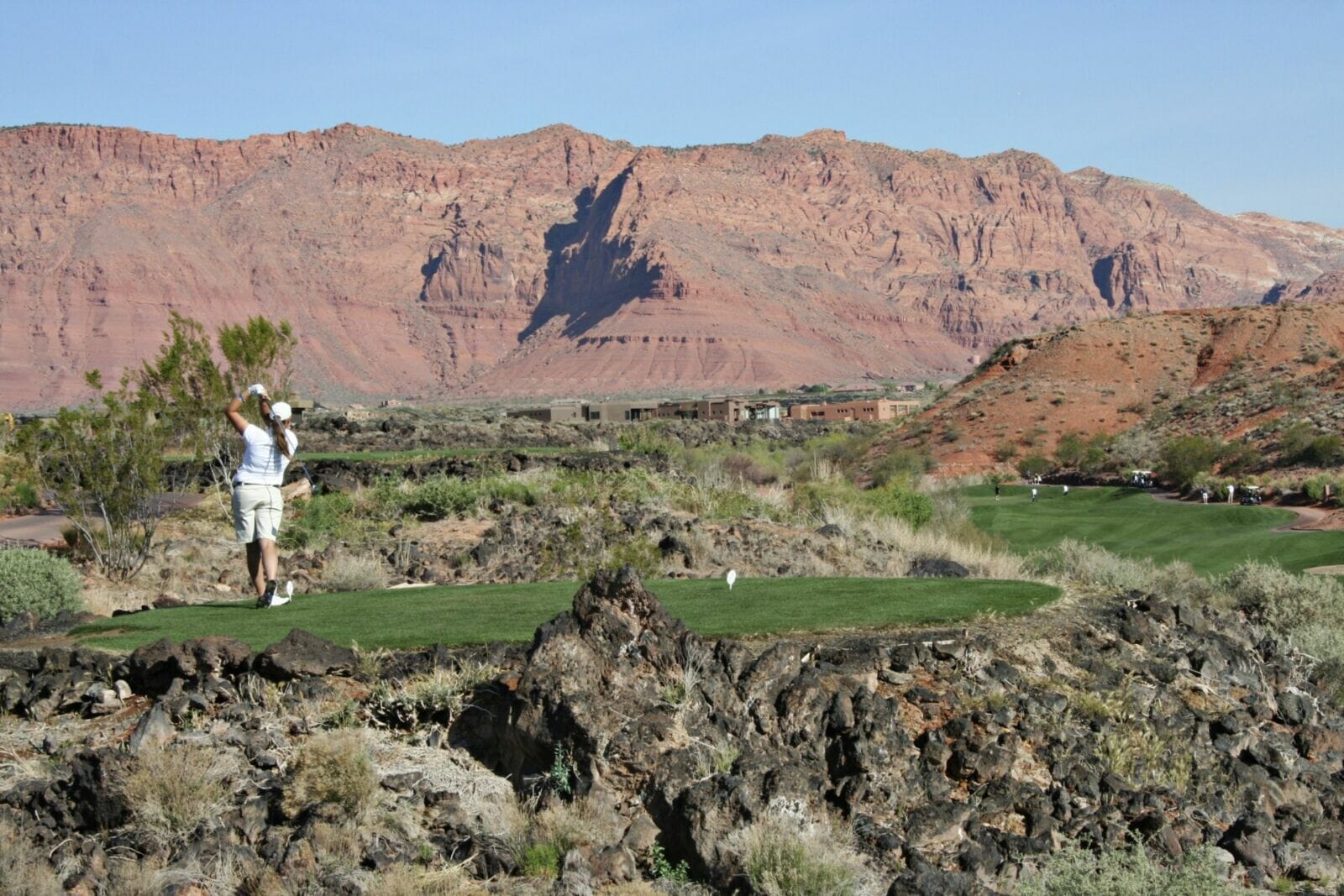Arizona has long been known as a sunny, tourist destination perfect for a round of golf. The Valley boasts nearly 200 well-manicured courses, according to Visit Phoenix, and is home to “The Greatest Show on Grass” — the Waste Management Phoenix Open. But what happens if a developer wants to look into rezoning golf courses for residential use.
Some neighborhoods throughout the state have golf courses embedded in their communities for residents and guests to enjoy. But what happens if the operator of the course withdraws, and the grounds begin to fall into disrepair?
READ ALSO: Ranking Arizona: Top 10 best places to live for 2022
READ ALSO: Ranking Arizona: Top 10 golf courses for 2022
One option is to rezone the green space to allow for much-needed housing to be built in its place as the cost to rent or own a home has risen dramatically over the past two years. Here’s what two zoning attorneys have to say about the complexities of rezoning golf courses for residential uses.
Zoning in
Throughout the state, different municipalities adopt a general plan — sometimes called a comprehensive plan — that serves as a long-term vision document focused on land use, among other topics. A zoning ordinance is derived from the general plan that implements its goals through regulations and standards on the individual uses of property.
A property can have its zoning designation changed if it is properly rezoned, which requires the city council to vote on the matter after a series of open public hearings to ensure the change is compatible with the surrounding area. For example, someone who wanted to tear down their suburban home to build a fast-food restaurant on the same parcel is unlikely to get permission from the city to do so.
Ben Graff, partner and zoning attorney at Quarles & Brady, explains that it’s common for the golf courses within neighborhoods to have single-family home general plan designations, meaning the city did not envision higher density options such as townhomes or duplexes in the area.
“One of the challenges is changing the city’s vision and helping them understand why a pocket of higher density housing might be a good transitional use for [these golf courses] and help with the housing crisis that’s being caused by a lack of diversity of both rental and for-purchase homes,” Graff says. “Higher density doesn’t have to be four story apartments.”
Graff — who represents multifamily developers — adds that building multifamily on golf courses is especially difficult since it’s a more radical change for nearby residents compared to building additional single-family homes for the neighborhood.
Further complicating redevelopment is that the golf courses are often subject to covenants, conditions and restrictions (CC&Rs) laid out by the homeowners’ association (HOA).
“In those cases, you’re not only rezoning the golf course to allow for residential uses but you’re also facing a modification to the CC&Rs, which is a separate process more like a contract [negotiation],” explains Rory Juneman, partner at Lazarus & Silvyn. “You have to get a certain percentage of residents to approve a change to the CC&Rs, and it’s usually a high threshold — 60% to 80%, sometimes 100%.”
For developers, CC&Rs add another hurdle to an already difficult and costly ordeal. “Whether or not it’s viable [for the developer] depends on the location,” Juneman says. “If [the golf course] is in an area of the city where land values are especially high and the developer thinks they’ll get a return off that, then it may be worth the hassle.”
Neighborhood concerns about rezoning golf courses
One facet of the rezoning process is for the public to voice their opinions about a proposed development to the city council. Juneman notes that across the spectrum of rezoning cases, neighbors are consistent in their concerns: the potential for more traffic, negative impacts on property values and increased crime.
Zoning attorneys must contend with additional layers of expectations when dealing with golf courses. Some residents have paid a premium on their home purchase to be next to a golf course, or even had part of their HOA dues allocated to operating and maintaining the green.
“Say a single-family home development is next to a vacant lot, there may be some predictability that a developer could at some point propose a rezoning case to increase the density of that parcel,” Graff says. “But for neighborhoods with golf courses, they would argue that they have a reasonable expectation of ‘once a golf course, always a golf course.’”
If, however, the operator of the course exits and no other action is taken to sustain the greens, the space will fall into disrepair. “It’s difficult to contend that a viable, well-kept development would be more detrimental to home values than an empty, brown golf course,” Graff continues.
Short of residential uses, that land has little utility for much else. Juneman notes that a neighborhood in Tucson recently worked with a conservation group to buy the golf course land and keep it as a designated open space, but the amount of organization required means that is a rare case. A municipality could feasibly convert a golf course into a park, but that comes with upfront and maintenance costs that a city likely wouldn’t want to take on.
Most people have a discomfort with change in general, which should be addressed with compassion and understanding throughout the process, Juneman says. “But at the same time,” he concludes, “we have to pose the question: ‘What is this [former golf course] going to be if the financial reality is that it can’t continue [operations]?’”




